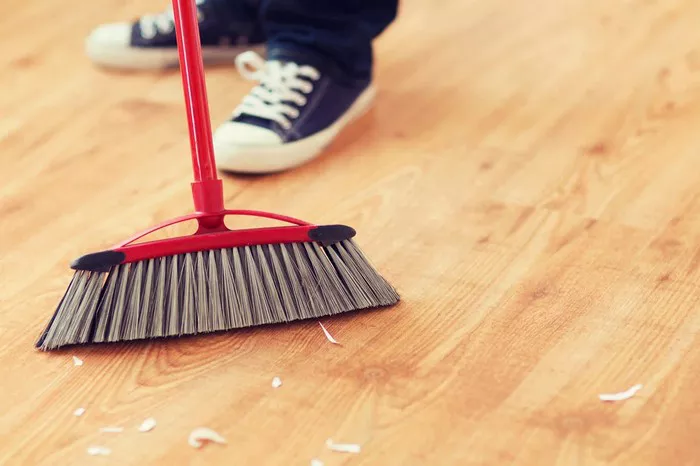Maintaining a clean and tidy space is a task that requires the right tools, and perhaps none are as essential as a reliable broom. Whether you’re sweeping hardwood floors, tiles, or carpets, selecting the appropriate broom can significantly impact the ease and efficiency of your cleaning routine. However, with a plethora of options available in the market, ranging from traditional straw brooms to modern synthetic ones, it can be challenging to determine which type is best suited to your needs. In this guide, we’ll delve into the key factors to consider when choosing between brooms, focusing particularly on ease of use. By understanding these factors, you’ll be equipped to make an informed decision that enhances your cleaning experience.
Understanding Broom Types
Before delving into which broom is easier to use, it’s essential to grasp the different types available. Brooms generally fall into two main categories: traditional straw brooms and modern synthetic brooms.
Traditional Straw Brooms
Traditional straw brooms, often referred to as corn brooms, have been used for centuries. They are typically made from natural materials such as straw or corn husks bound together with twine. These brooms are known for their durability and ability to sweep large debris effectively. However, they may be less suitable for finer particles and can be more challenging to maneuver due to their stiffness.
Modern Synthetic Brooms
In contrast, modern synthetic brooms are constructed using synthetic materials such as nylon or polypropylene. These brooms often feature bristles designed to attract and capture fine dust and debris with greater efficiency than traditional straw brooms. Additionally, synthetic brooms tend to be lighter in weight and more flexible, making them easier to maneuver, especially in tight spaces or corners.
Factors Affecting Ease of Use
Several factors contribute to the ease of use of a broom. Understanding these factors can help you determine which type of broom is best suited to your specific cleaning needs.
1. Bristle Type and Design
The design and composition of the bristles play a crucial role in the effectiveness and ease of use of a broom. Synthetic brooms with densely packed, flagged bristles are particularly adept at capturing fine dust and debris, making them ideal for sweeping various floor surfaces with minimal effort. In contrast, traditional straw brooms may struggle to trap smaller particles due to their coarser bristles.
2. Handle Length and Grip
The length and grip of the broom handle significantly impact user comfort and control. Ideally, the handle should be long enough to allow for efficient sweeping without requiring the user to bend over excessively, which can lead to discomfort or strain. Additionally, a comfortable, ergonomic grip can enhance maneuverability and reduce fatigue during extended cleaning sessions.
3. Weight and Maneuverability
The weight and maneuverability of a broom are crucial considerations, particularly for individuals with limited strength or mobility. Synthetic brooms are generally lighter and more maneuverable than their traditional counterparts, making them easier to use for sweeping large areas or navigating around obstacles.
4. Versatility
While some brooms are designed for specific floor surfaces, such as hardwood or carpet, others offer greater versatility. A broom that can effectively sweep various surfaces with equal efficiency can simplify cleaning routines and reduce the need for multiple cleaning tools.
5. Maintenance Requirements
Finally, consider the maintenance requirements of the broom. Synthetic brooms are often easier to clean and maintain than traditional straw brooms, which may require more frequent shaking or washing to remove debris and prolong their lifespan.
Making an Informed Decision
When choosing between brooms, it’s essential to prioritize your specific cleaning needs and preferences. Consider factors such as the type of flooring in your home, the frequency of use, and any physical limitations that may affect your ability to use the broom comfortably. Additionally, don’t hesitate to test out different broom models in-store or read online reviews to gain insight into their performance and durability.
“The design and composition of the bristles play a crucial role in the effectiveness and ease of use of a broom.”
“A comfortable, ergonomic grip can enhance maneuverability and reduce fatigue during extended cleaning sessions.”
Conclusion
In conclusion, selecting the right broom can significantly impact the ease and efficiency of your cleaning routine. While both traditional straw brooms and modern synthetic brooms have their advantages, factors such as bristle type, handle design, weight, and versatility ultimately determine which broom is easier to use. By carefully considering these factors and prioritizing your specific cleaning needs, you can make an informed decision that enhances your cleaning experience and maintains a clean, tidy living space.
FAQs
Q1. Which broom is better for sweeping hardwood floors, traditional straw brooms, or modern synthetic brooms?
A1: For sweeping hardwood floors, modern synthetic brooms with densely packed, flagged bristles are generally more effective than traditional straw brooms. Synthetic brooms are adept at capturing fine dust and debris without scratching or damaging the surface of the hardwood floor.
Q2. Are synthetic brooms suitable for outdoor use, such as sweeping patios or sidewalks?
A2: Yes, synthetic brooms are well-suited for outdoor use, thanks to their durable construction and efficient debris-capturing capabilities. They can effectively sweep various outdoor surfaces, including patios, sidewalks, and driveways, making them a versatile cleaning tool for both indoor and outdoor spaces.
Q3. How can I prolong the lifespan of my broom and maintain its effectiveness?
A3: To prolong the lifespan of your broom and maintain its effectiveness, regularly clean the bristles to remove trapped dust and debris. Additionally, store the broom in a dry, upright position to prevent the bristles from becoming misshapen. Finally, inspect the broom handle for any signs of wear or damage and replace it if necessary to ensure optimal performance.

